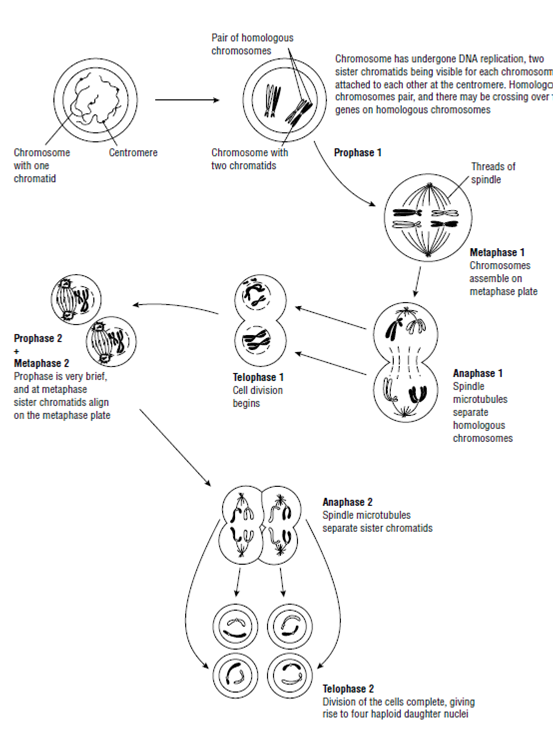Meiosis and sexual cell division
Most protista are haploid for most of their life cycle. They have only one set of chromo- somes. The diploid stage (two sets of chromosomes) is often very transient and found only in resting structures such as spores. The life cycle ends with meiosis, which returns the new cell to its haploid state. In organisms with a dominant diploid vegetative phase, meiosis occurs just before cell division, producing haploid gametes which then fuse to re-form the diploid.
At the end of the interphase and before meiosis begins, the duplication of chromosomes to chromatids occurs just as it does in mitosis. However, as the cell is diploid, homologous pairs of chromosomes associate during prophase 1, and at this point it is possible for genetic recombination to occur.
During metaphase 1 chromosome assemble across the metaphase plate, and in anaphase 1 homologous chromosome are separated. Telophase 1 is very transient, and the chromosomes rapidly move into the prophase and metaphase 2, where pairs of chromatids assemble across the metaphase plate. The chromatids separate from each other at anaphase 2, and in telophase 2 cytoplasm begins to separate around the four progeny nuclei, each containing a haploid complement of chromosomes.
In some circumstances multiple sets of chromosomes can exist in a cell and this is termed polyploidy. Nuclear division in polyploid organisms is complex and often results in the loss of single chromosomes, leading to odd numbers of chromosomes in some progeny cells. This is termed aneuploidy. Polyploid and aneuploid cells are usually unable to participate in meiosis because of their odd chromosome numbers.


Figure: Events of mitosis: (a) nuclear division, (b) cell division. Courtesy of BS Beckett

Figure 3. The events of meiosis.